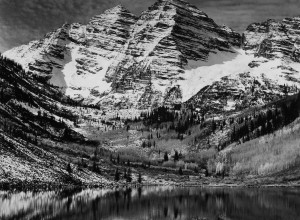Book Fair Find: Publisher's Dummy of "Darkness & Daylight"
As I recently told book fair promoter Marvin Getman, I rely on serendipity as a book collector. That's not a very practical way to collect, but it works for me. Case in point: this past April during Rare Book Week, I spent a few hours at Getman's "satellite fair" on Saturday. Typically I roam from booth to booth, scanning the offerings, seeing what catches my eye, and chatting with the proprietor if they're so inclined. My husband and I shop separately and meet up to make decisions. But as we were conferring about a book he wanted to purchase, he pulled a slim unmarked volume bound in burgundy cloth from a nearby shelf, gave its contents a quizzical glance, and asked me if I didn't have a book like this at home. I did, I said, but mine was leather-bound and contained four times as many pages.  It took a moment to realize what he had found: a publisher's dummy for a heavily illustrated history of Manhattan called Darkness and Daylight, or Lights and Shadows of New York Life (1897). Written by social reformer Helen Campbell, the lengthy book details the dark underbelly of city life at the turn of the twentieth century--tenement living, homelessness, child labor, unsanitary hospitals, etc. I have had the book on my shelf for about ten years now, having purchased it at a Syracuse University Library charity auction for no other reasons than an interest in New York City history and a desire to donate to my undergraduate alma mater's library fund.
It took a moment to realize what he had found: a publisher's dummy for a heavily illustrated history of Manhattan called Darkness and Daylight, or Lights and Shadows of New York Life (1897). Written by social reformer Helen Campbell, the lengthy book details the dark underbelly of city life at the turn of the twentieth century--tenement living, homelessness, child labor, unsanitary hospitals, etc. I have had the book on my shelf for about ten years now, having purchased it at a Syracuse University Library charity auction for no other reasons than an interest in New York City history and a desire to donate to my undergraduate alma mater's library fund.  I bought the dummy, and I could barely wait to get home and set the two side by side for comparison. I learned that the book was produced in three styles--a low-priced edition in plain cloth with 232 text illustrations (lacking full-page steel engravings) for $2.50, a mid-range edition in extra fine cloth with gold stamping, complete with 252 illustrations, for $3.00, and a deluxe edition in leather for $4.00. The dummy contains pages of accolades for the book and about a dozen fill-in pages to list subscribers and what style they preferred. The man who previously owned my copy of the "real" book, H. L. Estes of Freeport, Maine, who signed and dated one of the free front endpapers, splurged--although considering the date, December 25, 1897, it was likely a gift.
I bought the dummy, and I could barely wait to get home and set the two side by side for comparison. I learned that the book was produced in three styles--a low-priced edition in plain cloth with 232 text illustrations (lacking full-page steel engravings) for $2.50, a mid-range edition in extra fine cloth with gold stamping, complete with 252 illustrations, for $3.00, and a deluxe edition in leather for $4.00. The dummy contains pages of accolades for the book and about a dozen fill-in pages to list subscribers and what style they preferred. The man who previously owned my copy of the "real" book, H. L. Estes of Freeport, Maine, who signed and dated one of the free front endpapers, splurged--although considering the date, December 25, 1897, it was likely a gift.
How fun it was to peek into the history of this book and to imagine the salesman or agent whose job it was to sell Darkness and Daylight. The experience was also a prime example of a book finding its owner, instead of the other way around. I wasn't looking for it, I didn't even know it existed, and yet, within a minute of holding it in my hand, I knew that book had to be mine.
Images courtesy of the author.














